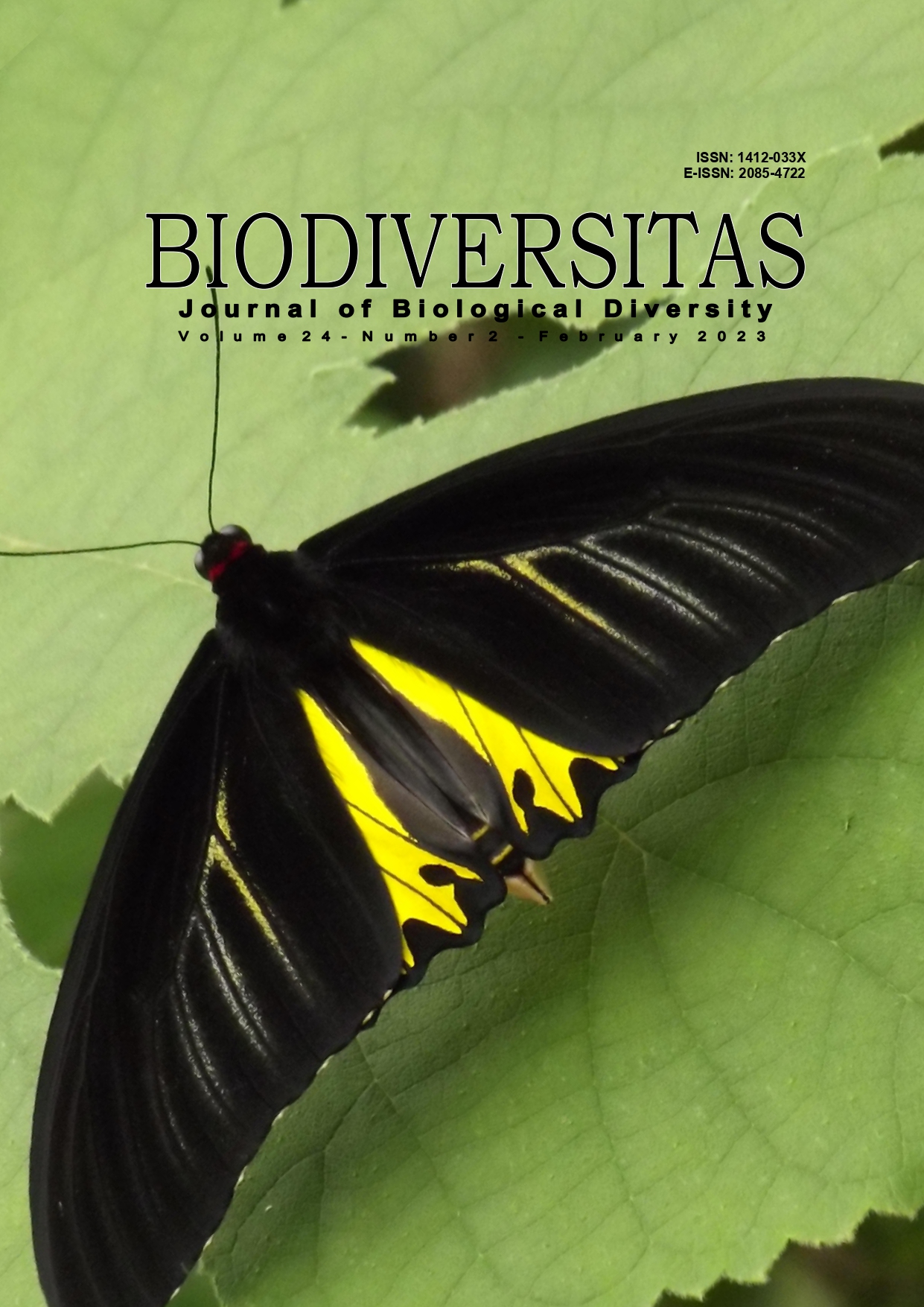Serratia marcescens strain NPKC3_2_21 as endophytic phosphate solubilizing bacteria and entomopathogen: Promising combination approach as rice biofertilizer and biopesticide
##plugins.themes.bootstrap3.article.main##
Abstract
Abstract. Sutio G, Afifah AN, Maharani R, Basri M. 2023. Serratia marcescens strain NPKC3_2_21 as endophytic phosphate solubilizing bacteria and entomopathogen: promising combination approach as rice biofertilizer and biopesticide. Biodiversitas 24: 901-909. Accumulation insoluble Phosphorus (P) and rice stem borer pest (Scirpophaga innotata) are two of the primary constraints in rice (Oryza sativa) production systems. The availability of soluble forms of P for plants in the soils is limited because it is fixed as insoluble P by iron (Fe) and aluminum (Al) in acidic soil as well as calcium (Ca) and magnesium (Mg) in alkaline soil causing P accumulation in the soil. Another problem is the rice pest which caused the most by rice stem borer (Scirpophaga innotata), should take in the first place because causing annual losses of the rice crop. Besides, soil acidity can affect the growth of bacteria in soil and pest management. The study highlighted the contribution of Serratia marcescens strain NPKC3_2_21 as endophytic root-associated microorganisms in solubilizing P to enhance the availability of P in soil for the plant. Besides, we investigated the effect of entomopathogenic bacteria Serratia marcescens strain NPKC3_2_21 on pests Spodoptera litura as a contribution to the knowledge of the efficacy of Serratia marcescens strain NPKC3_2_21 as an entomopathogenic bacteria for pest controlling management in rice plant. In addition, we assessed the growth ability of Serratia marcescens strain NPKC3_2_21 in alkaline, neutral and acid pH conditions as an indicator that these bacteria are able to be grown at various pH conditions. These analyses revealed that Serratia marcescens strain NPKC3_2_21 has potential as 1) endophyte that can enter with no visible harmful effects for plants, 2) P-solubilizing bacteria that enhance the availability of P in soil by producing organic acids, and 3) entomopathogenic bacteria to insects. Besides, Serratia marcescens strain NPKC3_2_21 can grow in the soil at various pH (acid, neutral and alkaline) conditions. Therefore, we suggested the bacterium Serratia marcescens strain NPKC3_2_21 might be an alternative strategy to enhance available P taken up by the roots, besides be a promising role as bio-insecticide applied in rice crops.

